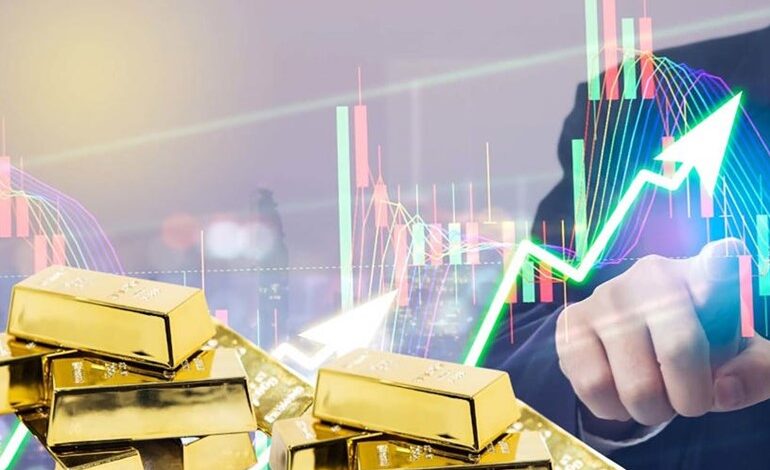
• Since the stock market’s upward trend began in October 2022, gold has outperformed stocks with a 67% return, surpassing the S&P 500’s 63%, making it one of the top global investments.
Gold prices have surged significantly since the start of the year, reaching unprecedented levels of over $2,772 per ounce last week. This marks a gain of approximately 33% year-to-date, according to Business Insider and Arabia Business.
Since the stock market began its upward trend in October 2022, gold has outperformed stocks, achieving a return of 67% compared to the Standard & Poor’s 500 index, which recorded a return of about 63%, according to YChartsdata. This performance positions gold as one of the best investments globally, as reported by Al Anba newspaper.
International central banks have been buying gold in recent years, with 483 tons purchased in the first half of this year— a record amount.
Central banks from Turkey, India, and China topped the list of the largest buyers, according to data from the World Gold Council. Part of the rise in demand from countries seeking to diversify their holdings away from the dollar is influenced by concerns about the dollar’s stability.
In a memo last month, Goldman Sachs stated, “We believe that the tripling of central bank purchases since mid-2022, driven by concerns about U.S. fiscal sanctions and sovereign debt, is a structural process that will continue.”
This trend has been particularly evident since Russia’s invasion of Ukraine in 2022, as the U.S. has aimed to maximize economic damage to Russia through sanctions. However, implementing sanctions against a country that is less dependent on the dollar poses challenges. One way to reduce dependence on the dollar is by purchasing gold.
According to economist Mohamed El-Erian, the continued rise in gold reflects a growing alignment between China and middle-power countries. He points out that there is an increasing interest in exploring potential alternatives to the dollar-based payments system that has been at the heart of the international architecture for about 80 years.
Russia has made significant strides in this regard, successfully steering its economy away from total recession after the United States imposed wide-ranging sanctions in 2022. This success may encourage other countries to reduce their dependence on the dollar, ultimately benefiting gold.
Gold is considered a safe asset due to its long history as a reliable store of value. As geopolitical tensions rise, investors tend to turn to the precious metal. From Russia’s war against Ukraine to escalating clashes in the Middle East and China’s ongoing threat to Taiwan’s independence, geopolitical tensions are escalating rather than receding.
Moreover, rising U.S. debt means that Treasury bonds—historically regarded as a safe haven asset—may no longer be risk-free.
Bank of America stated in this month’s memo, “Gold appears to be the last safe haven asset, motivating traders, including central banks, to increase their exposure to it.” Donald Trump’s trade has recently gained momentum as the chances of the former president winning the election have risen, making gold one of the biggest beneficiaries. A potential Trump presidency is expected to be accompanied by a high government deficit and rapid debt growth, which would heighten concerns about rising inflation and the sustainability of the US dollar.
Steve Susnick, chief strategist at Interactive Brokers, believes that even if Trump does not win the election, the deficit is likely to grow, prompting gold to record further gains.
Historically, gold prices have benefitted from lower interest rates, rising by 10% in the six months following the first interest rate cut by the Federal Reserve, according to World Gold Council data. The Federal Reserve’s expectations of cutting interest rates several times over the next year have also boosted gold prices.
While revenues have jumped since the Federal Reserve’s first interest rate cut last month, with 10-year Treasury yields recording their highest level since July last week, gold prices continued to rise. This suggests that gold investors are more focused on the trajectory of global interest rates, as central banks around the world appear willing to ease monetary policy.












